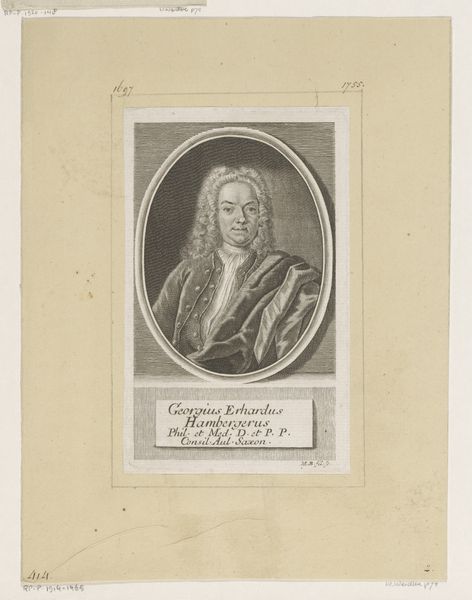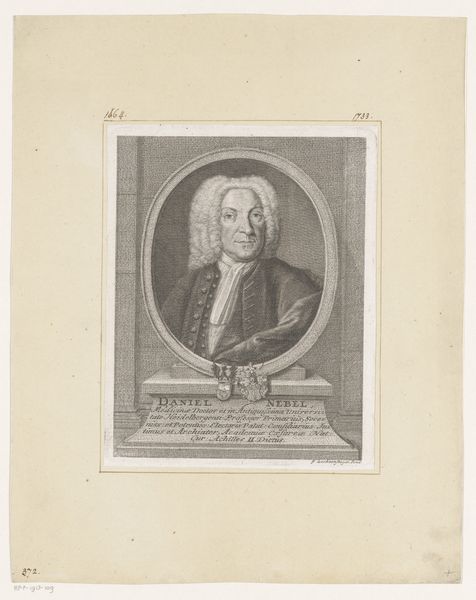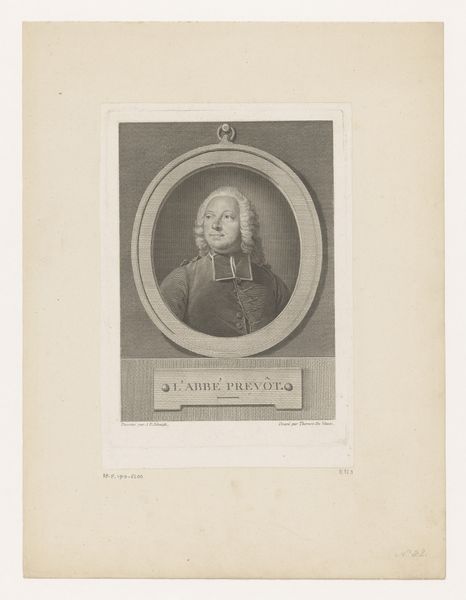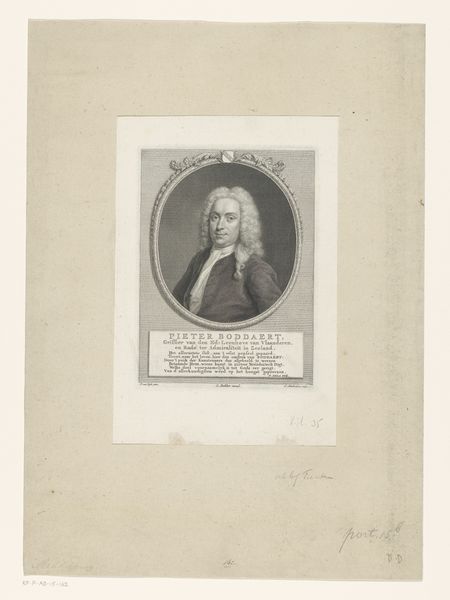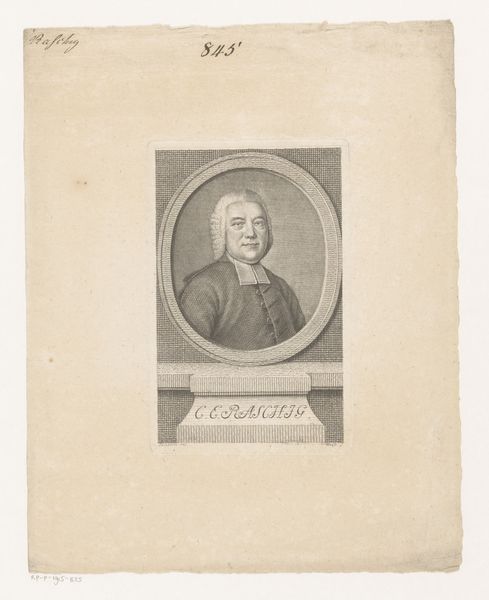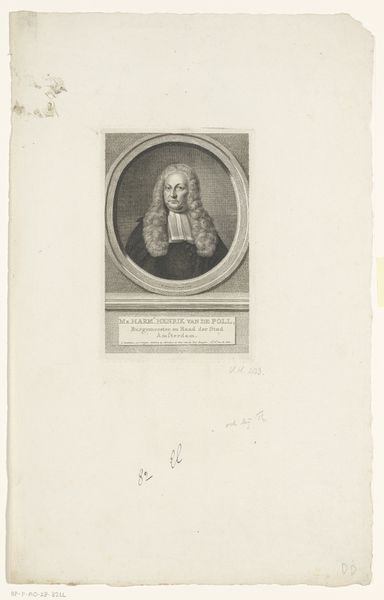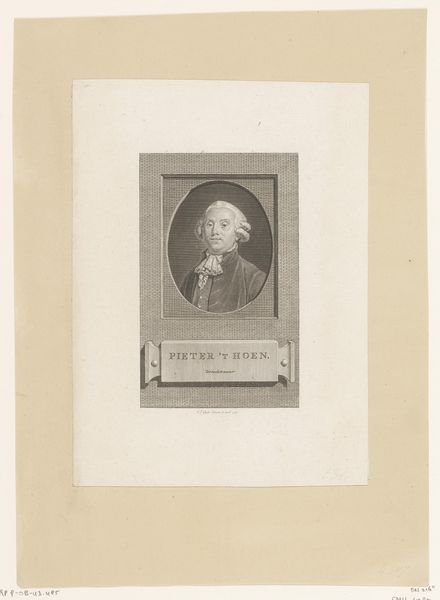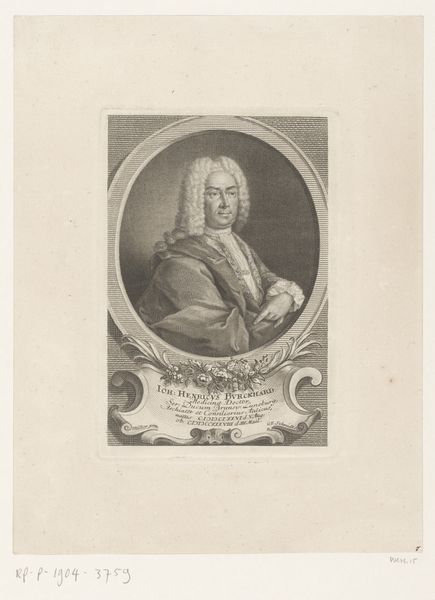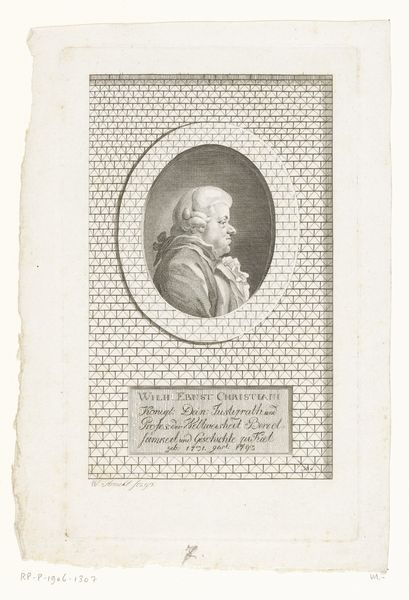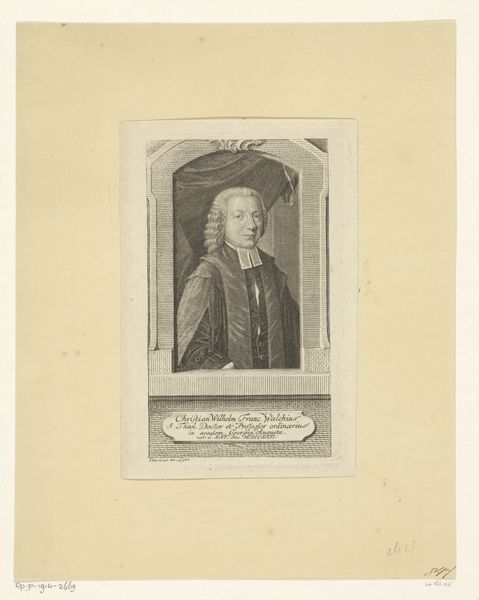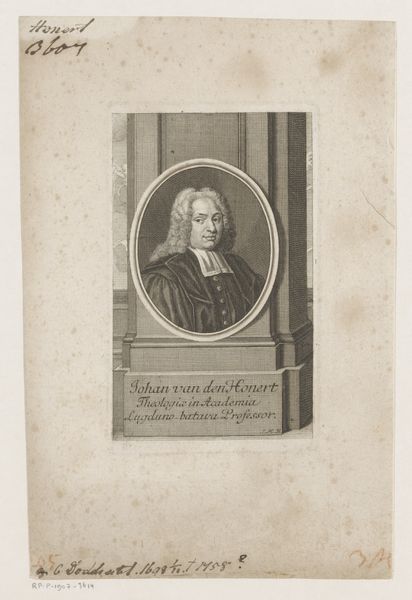
paper, engraving
#
portrait
#
aged paper
#
toned paper
#
baroque
#
ink paper printed
#
old engraving style
#
paper
#
personal sketchbook
#
history-painting
#
engraving
Dimensions: height 145 mm, width 85 mm
Copyright: Rijks Museum: Open Domain
Curator: What a fascinating character. There's something immediately engaging about this portrait, it feels almost like stumbling upon a wise old friend in an aged book. Editor: You’ve honed in on something, I think. This is an engraving, dating from somewhere between 1736 and 1767, a “Portret van Antoine François Prevost,” rendered on paper by Johann Martin Bernigeroth. It resides here at the Rijksmuseum. Curator: An engraving, of course, lends itself to that feeling, all those precise lines giving an impression of fine detail, capturing not just features but a sense of… knowing. It reminds me of those slightly unsettling yet captivating portraits you find in old studies, where the eyes seem to follow you. Editor: Absolutely. The precision also speaks to the role of portraiture in solidifying status. Printmaking made images like this more accessible. What was once solely the domain of painted portraits for the elite was now available to a broader, burgeoning middle class. Portraits cemented reputations, didn't they? They broadcasted your image, your ideas. Curator: That oval frame! It almost elevates the sitter to the realm of the cameo or a classical bust. Did that shape also contribute to how portraiture shaped social standing at the time? Editor: In terms of its format, this recalls earlier engraved portraits. The framing is very traditional, but think about the inscription below – it names Prevost, sure, but also explicitly labels his role as almoner to the Prince de Conti, reminding viewers of his place in a specific network. Curator: Networks, like today's online world only etched in ink! It makes you wonder, doesn’t it, about all those portraits hanging in family homes or libraries – whispers of influence passed down through generations. I get the sense that the intent here was much like curating one's social media presence today. It feels deliberate and controlled. Editor: The scale matters, too, it would have likely circulated and lived within albums or print collections, becoming part of a broader visual culture. What strikes you most now, thinking about what it reveals of its era? Curator: Beyond just documentation, beyond the markers of status, I’m touched by the lingering impression of personality, caught between the precise lines. A sense of timeless curiosity that speaks across the ages.
Comments
No comments
Be the first to comment and join the conversation on the ultimate creative platform.

